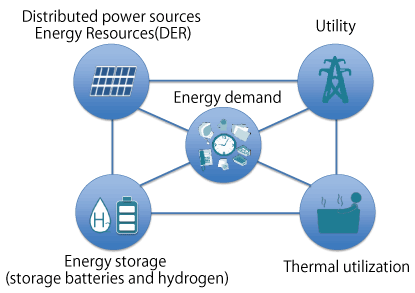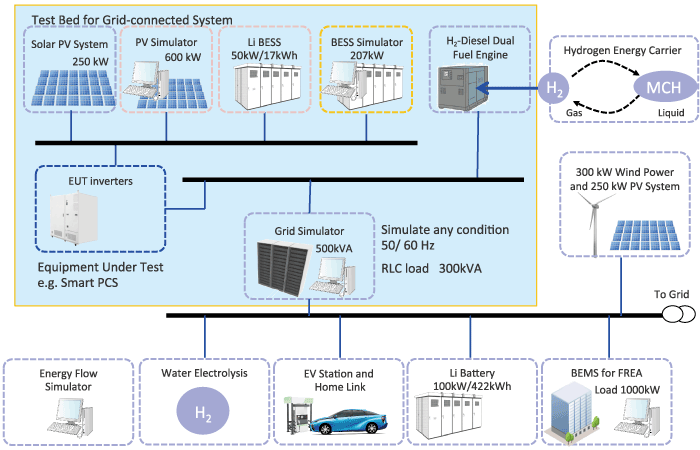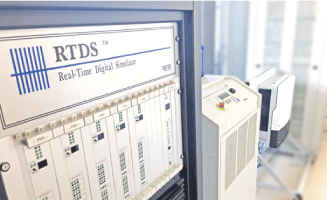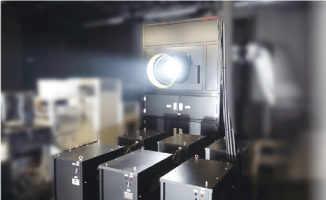Research and Verification of Advanced Integration of Renewable Distributed Energy Resources
Introductory Video of Energy Network Team
 "Smart Distributed Energy Resources"
"Smart Distributed Energy Resources"
Research, Verification and Standarization of Advanced Integration of Renewable Distributed DERs
[ YouTube 3'30 ]
Overview
When there is high penetration of renewable energy based generators, it is harder to achieve instantaneous demand and supply balance in the network. Advanced utilization of existing power plants and storage systems is imperative to achieve stable energy output. A suitable combination of renewable energy resources for each location is also important, because distributed energy resources (DERs) are highly dependent on local meteorological conditions.
Research Target
The team has been developing a renewable energy network to reasonably and effectively introduce renewable energy into the mature legacy power grid system. This will reduce the consumption of finite energy resources (fossil fuels, etc.) and reduce CO2 emissions. We focus on advanced control and grid support technology for a smart inverter (PCS).
This research aims at developing innovative integration and control technologies which will accommodate larger number of DERs and mitigate their negative impacts. Energy storage systems (ESS), such as hydrogen or batteries, are especially considered in smoothening the power output of PV and Wind generators under varying meteorological conditions.
In particular, we are developing optimized operation technology of distributed energy resources (DERs) such as solar photovoltaics and wind power, micro grid technology and the integration technology of multiple DER with energy storage for aiming for “safe, secured and fair” energy systems in future. To this end, we are establishing “Solar Resource Application platform (SoRA)” strategy.
 【Fig. 1】Solutions for widespread use of renewable energy and cost-effective grid stabilization technology
【Fig. 1】Solutions for widespread use of renewable energy and cost-effective grid stabilization technology
Research Outline
The team is developing a performance test method for elemental technologies such as DER, ESS, and users’ equipment in addition to a technology for the integrated use of renewal energy in combination with ESS and heat utilization technologies in order to realize a renewable energy network.
This will improve the power supply value and the economic value of renewable energy and promote various introduction plans such as 100% renewable energy use.
The team is mainly working on the following research and development topics:
- Comprehensive evaluation of a PV generation system: predicting the annual amount of power generation of various types of PV modules, conducting PV inverter performance tests and field failure diagnosis of a utility-scale PV system, etc.
- Grid support and smart technology for DER: We provide a smart test platform for energy management systems (EMS) as a user facility and keep developing performance verification test procedures and updating environments.
- International standardization: We seek prompt international standardization of the above development results through cooperation with international research institutes and others.
 【Fig. 2】Technological items handled by the Energy Network Team
【Fig. 2】Technological items handled by the Energy Network Team
Main Research Facilities
Distributed energy resources (DER) demonstration platform【figure below】
This platform is used for the development of an energy management system (EMS) and its demonstration through PV systems (consisting of different technologies from ten companies), a large power grid simulator (Smart DER system research equipment consisting of a 500kVA AC grid simulator and two sets of 300 kW PV simulators). In addition, the platform enables hydrogen production technologies using renewable energy in anticipation of the hydrogen society, research and development facilities for distributed batteries such as electric vehicles and EMS evaluation linked with forecast technologies for solar irradiation and wind velocity (EV demonstration facilities, 20 kW class PV + water electrolysis demonstration facilities, etc.).
*DER: Distributed Energy Resources
 【Fig. 3】DER demonstration platform
【Fig. 3】DER demonstration platform
Activities and Achievements
1.Advanced PV and Battery inverters (Smart Inverters)
For introduction of a large amount of DERs, it is needed to have advanced functions to support the stability and quality of electricity power networks. We have developed an autonomous test system through the international system platform, SunSpec SVP, and a validation system for smart inverter’s advanced functions with Hardware-in-the-Loop technologies. A large-size (500 kW) Smart inverter has been successfully tested in our lab.
2.System integration technologies and energy management
The team conducted a performance analysis of individual technologies in our demonstration field. We have developed a simulation tool “SoRA-Grid” to verify advanced functions of smart inverters in distribution networks. We have also developed the cybersecurity technologies to be implemented with IEDs (Intelligent Electronics Devices) in the future smart grid.
3.Advanced monitoring of renewable energy resources
The team developed a renewable energy power generation observation system to better understanding the temporal and spatial variability in power generation when PV and Wind based technologies are introduced in Fukushima Prefecture on a massive scale through the Fukushima Prefecture Renewable Energy Next-Generation Technology Development Project (FY2013‒2014). The system makes it possible to estimate the amount of power generation (PV and wind power) in entire Fukushima Prefecture using a 2-km mesh and an interval of one hour, and to forecast the power generation several hours in advance using the same model. The team will continue to improve the system’s accuracy and examine the possibility of its nationwide introduction in the future.
 【Fig. 4】Advanced/Smart inverter testing facility
【Fig. 4】Advanced/Smart inverter testing facility
(Advanced functions and interoperability test)
 【Fig. 5】Solar simulator for PV module performance testing and calibration
【Fig. 5】Solar simulator for PV module performance testing and calibration
(Solar irradiance emulating and temperature control chamber)
Team Member
| Title |
Name |
| Leader |
OTANI Kenji |
| Senior Researcher |
HASHIMOTO Jun |
| Senior Researcher |
KODAMA Yasuhiro |
| Researcher |
KIKUSATO Hiroshi |
| Researcher |
ORIHARA Dai |
| - |
Ustun Taha Selim |